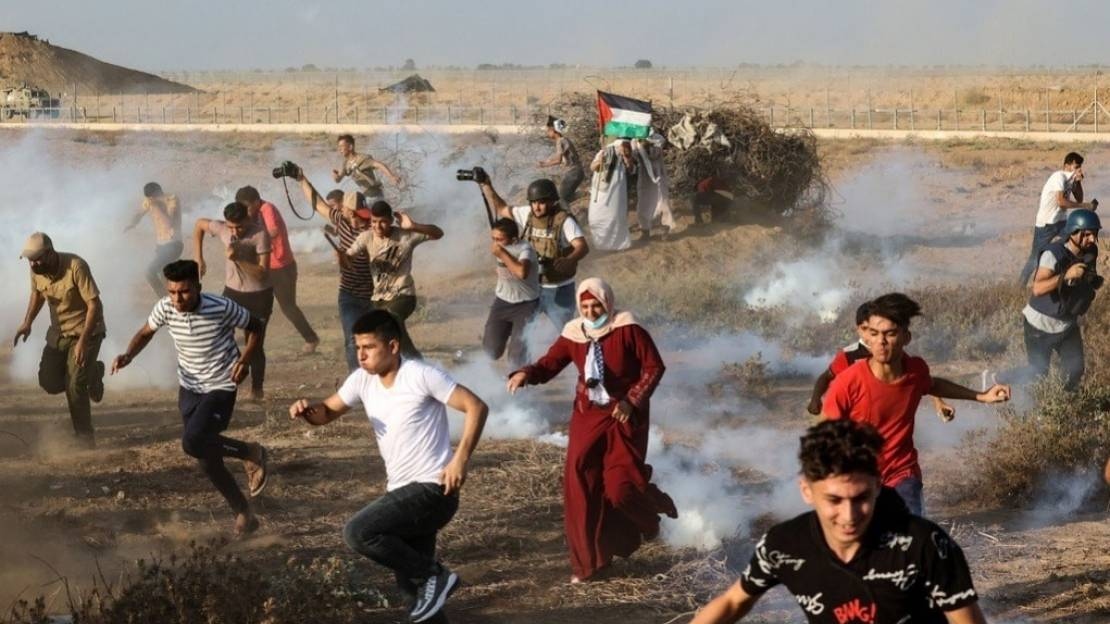The Israeli military used heavy force to disperse hundreds of Palestinians protesting at its border with the occupied Palestinian territory of Gaza on Wednesday, August 25. The Palestinians in southern Gaza gathered near the border at Khas Younis demanding an end to the Israeli blockade.
Gaza has been under severe land, sea, and air blockade imposed by Israel since 2006, leading to daily hardships for over two million residents of one of the world’s most densely populated regions, which the United Nations calls the “world’s largest open-air prison.”
The Israeli military admitted to using tear gas and live ammunition against the protesters. According to Gaza’s health ministry, at least 14 Palestinians were wounded in the attacks. Five of these fourteen were injured by live ammunition.
Wednesday’s protests were called following the Israeli attack on a similar protest on Saturday. On that day, the Israeli forces heavily repressed the demonstration, injuring at least 40 Palestinians, including one 13-year-old boy who was shot in the head and is still critical. 32-year-old protester Osama Dueji, who Hamas claimed was its member, died in a hospital on Wednesday.
Egypt, too, has closed the Rafah border, which it shares with Gaza following Saturday’s demonstrations. Egypt has often blocked the border in coordination with Israeli authorities preventing Gazans from accessing the outside world.
The blockade has severely damaged Gaza’s economy, increasing poverty and unemployment. According to one UNCATD report last year, the siege cost Gaza USD 16.7 billion, at least six times its entire economy. The report says that the unemployment rate in Gaza is around 50%, and more than half of its population is forced to live in poverty, dependent on aid for survival.
Supporting the demonstrations against the blockade and occupation, the Hamas spokesperson said that protests in different parts of Gaza would continue. “It is the right of our Palestinian people in the Gaza strip to live a decent life on their own land, therefore their options for pressuring the occupation will remain open until they have their demands fulfilled and the blockade lifted entirely,” he said, according to the the Palestinian Information Centre.
Repeated Israeli airstrikes inside Gaza have destroyed civilian infrastructure, forcing many to live in temporary shelters. Public amenities such as electricity, water supply, and sanitation have also been badly affected, with some regions getting infrequent or no electricity at all for days.
The latest 11-day Israeli offensive inside Gaza in May killed at least 250 Palestinians and injured around 2,000. Thousands were rendered homeless due to the deliberate targeting of civilian residential areas by Israeli bombers. Israel claims Hamas uses those areas for its offensive operations against Israel, which Hamas has denied and called the Israeli bombings on civilian infrastructure an act of “collective punishment.”
The ICC and UNHRC have been investigating the possible war crimes and human rights violations in the Israeli attacks and blockade of Gaza.





